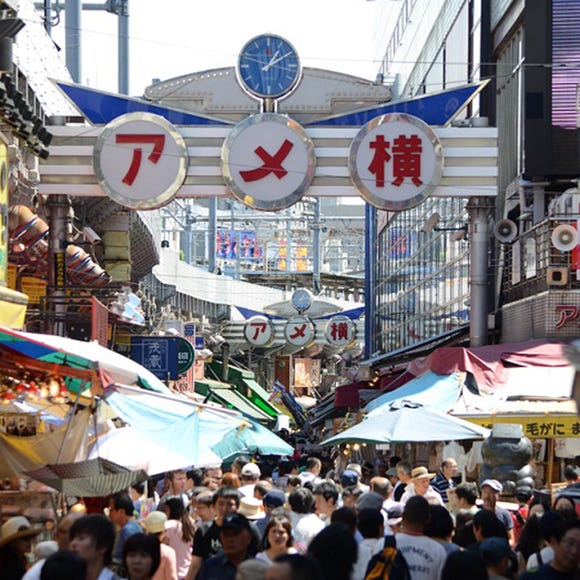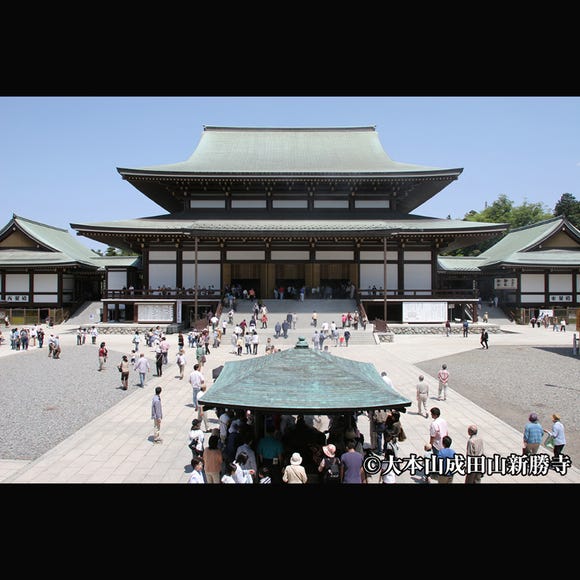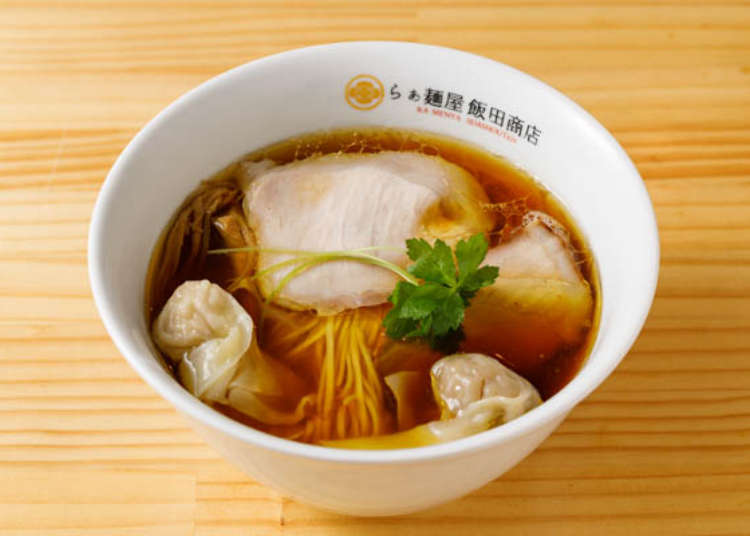
In Yugawara, Kanagawa, there’s a shop that ramen lovers consider “The Holy Land of Ramen.” Opened in 2010, Ramenya Iida Shouten won the TRY Ramen Award (Kodansha), the highest in the industry, for two consecutive years in 2017 and 2018. In January 2018, it appeared on the Jonetsu Tairiku (“A Passionate Challenger”) (MBS / TBS network) show and became a sensation. We went to Iida Shouten to discover the secret of its popularity!
A visit to Yugawara’s Iida Shouten!
It takes less than 90 minutes to get from Tokyo Station to Yugawara Station on the JR Tokaido Line Rapid Acty. From Yugawara Station it’s about a 10-minute walk to Iida Shouten. Business hours are limited to four hours from 11:00 to 15:00 and there are always long lines, so numbered entry tickets are required.
In order for customers to avoid waiting at the store as much as possible, the numbered tickets are distributed five times before opening at 7:00, 8:00, 9:00, 10:00, and 10:30.
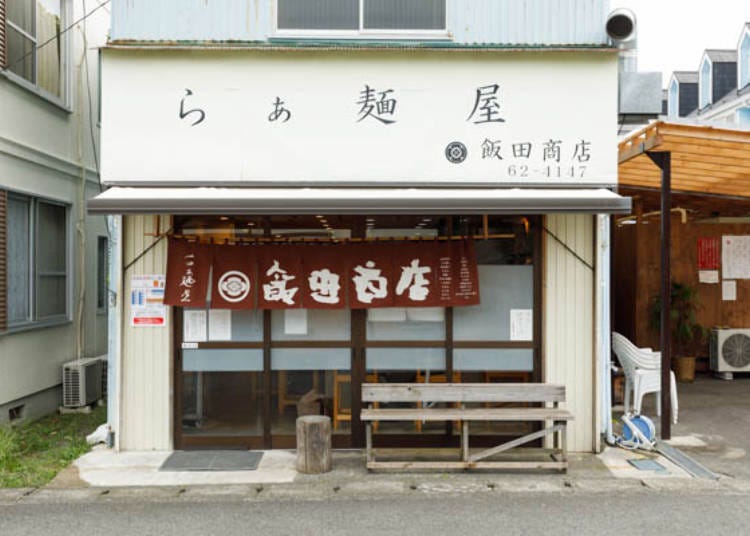
We arrived at the shop just before 10:30 and despite visiting on a weekday, fifteen customers were already waiting for tickets. The customer base is slightly different from that of a typical ramen shop, and those lined up ranged from young to old, from parents with children and babies to groups of senior women all in eager anticipation of their upcoming ramen experience.
At the scheduled time, a staff member comes out of the shop to hand out the numbered tickets.
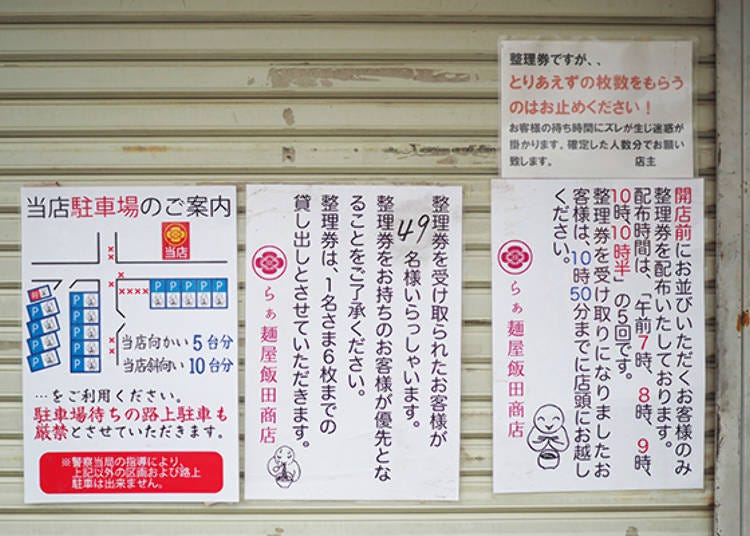
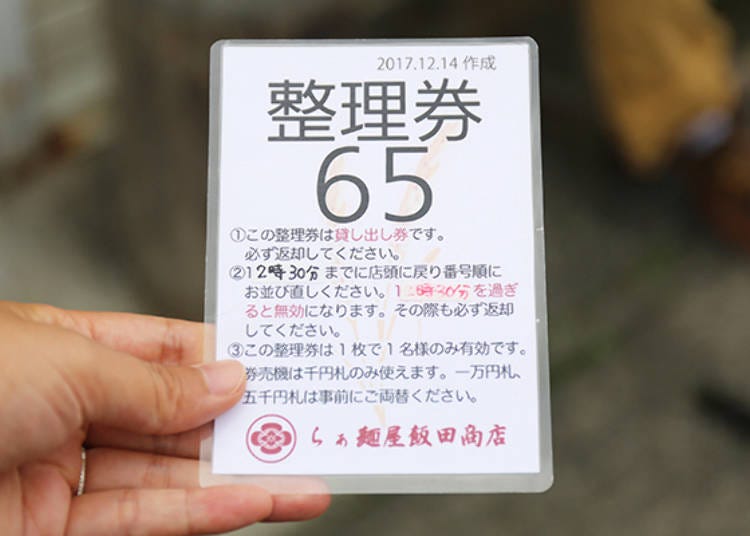
After getting our ticket, we strolled around Yugawara for about two hours and then returned to the shop at the time listed on the ticket. Customer numbers are called shortly after the listed time, and then they use the ticket vending machine in the shop to place their orders. Thanks to the numbered tickets, the actual time waiting in line is short, and it was our turn in no time!
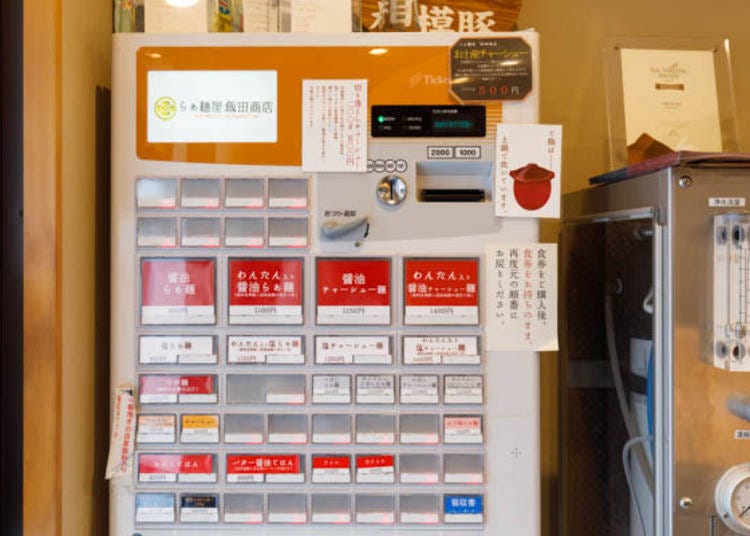
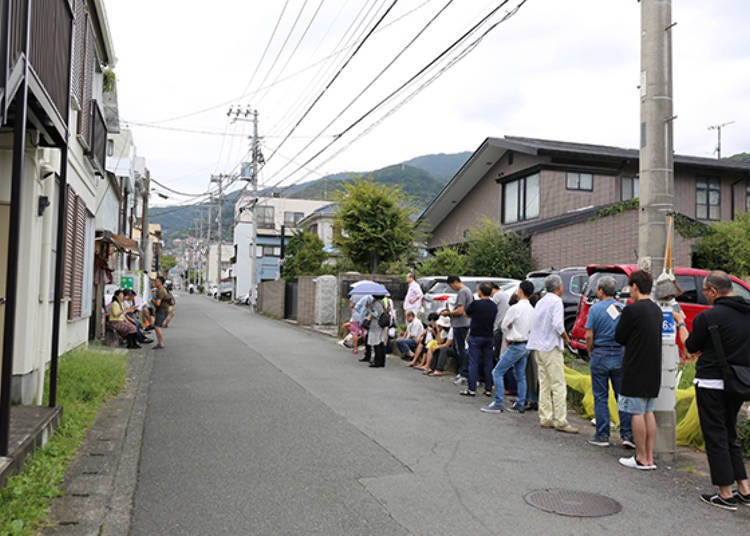
Depending on the number of tickets passed out on a given day, people without a ticket can still line up too. On the day we went, there were about thirty people waiting at 12:30. The following three days were holidays, and the number of reservations reached 250 by 10:30 so no further entry was allowed.
The Astonishing Flavor of Chicken Soup and Homemade Noodles!
We ordered the most popular “Soy Sauce Ramen with Wonton” (1,100 yen including tax) and “Tsukemen,” (1,000 yen including tax), recommended by the owner. After giving the ticket to the staff and waiting outside for about 5 more minutes, we finally sat down in the shop.
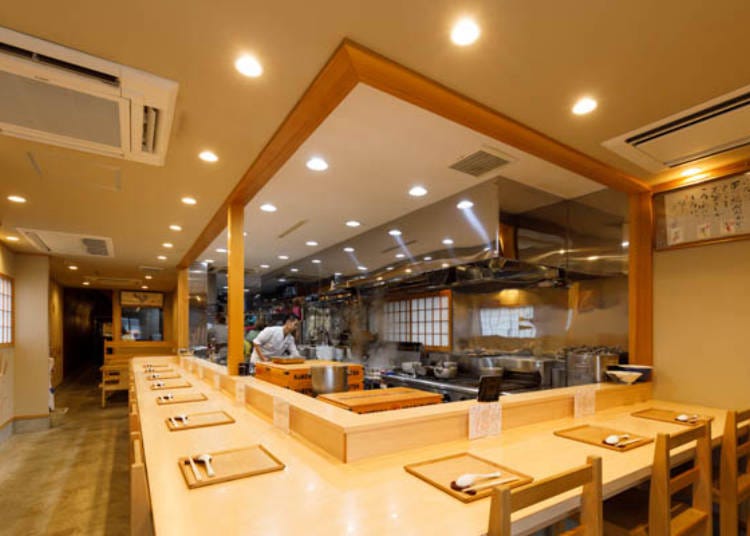
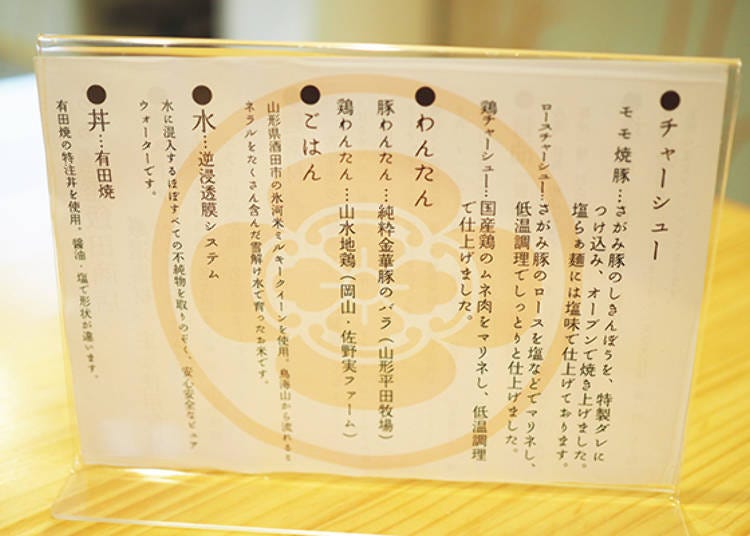
Tabletop cards list and describe the various ingredients used in your meal and just reading it will whet your appetite. While reading you’ll begin to catch the delicious smell of your ramen as it’s prepared!
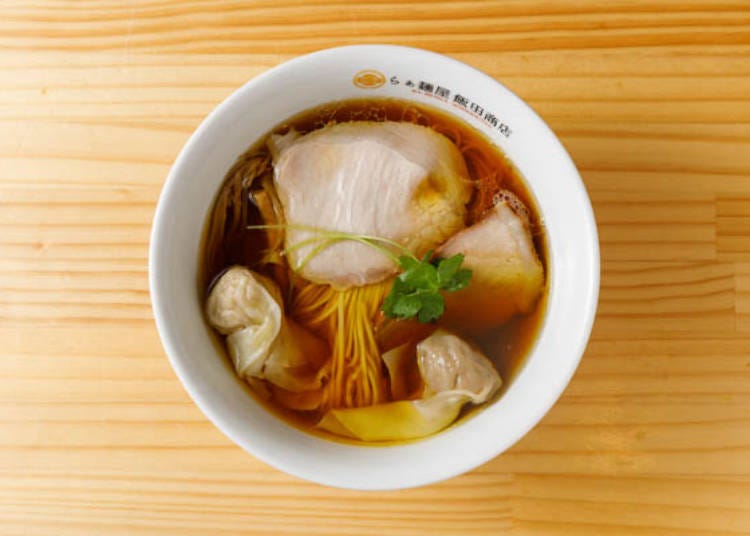
And the first spoonful – wow! The aroma of the chicken oil broth will fill your nostrils and delight your taste buds with its rich, bold, yet refreshing, soy flavor.
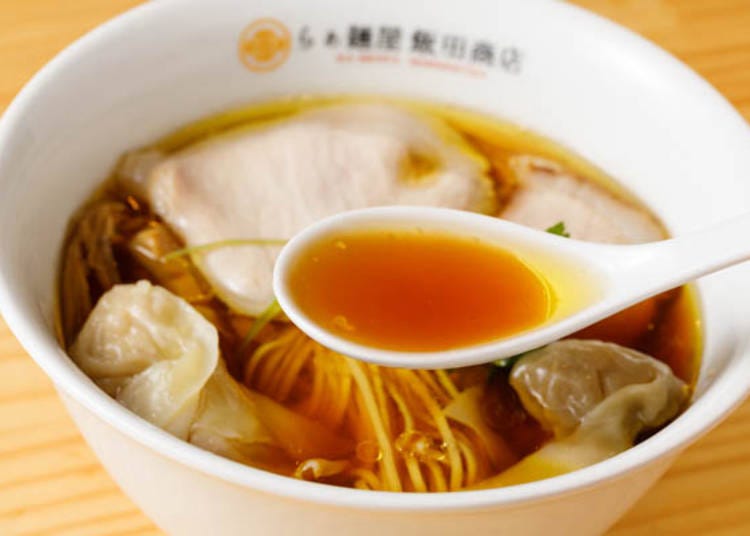
Next, the noodles. They’re quite long, but smooth and easy to slurp up.
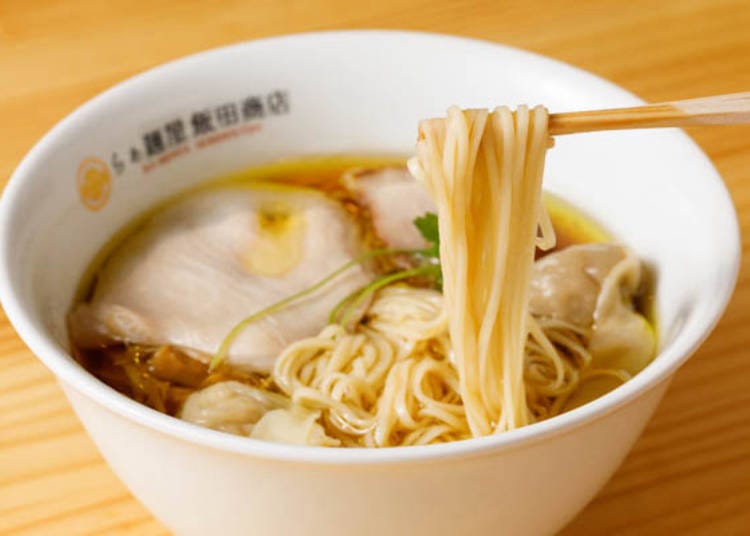
The taste of the toppings will have you exclaiming “Amazing!” throughout your meal. The chashu pork loin is juicy and the thick, soft momoyaki pork is easy to eat, further satisfying your appetite.
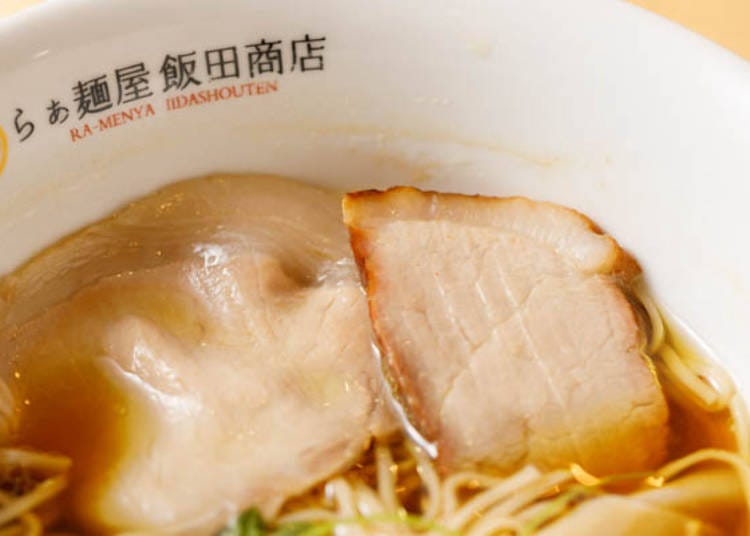
The two wonton dumplings are made with different types of meat (chicken and pork), and it’s a pleasure to compare the differing flavors. Both are full of meat and go well with the soup – you’re sure to be satisfied!
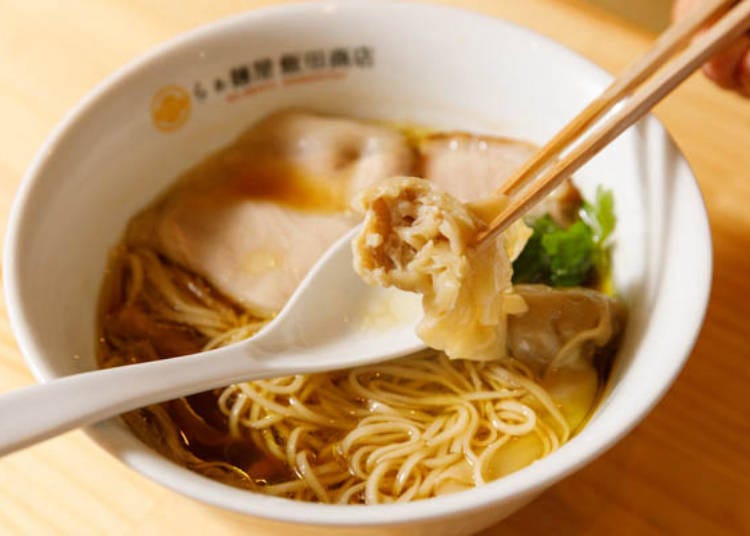
You can taste the dedication and skill put into each ingredient from the flavorful broth to the smooth noodles, and you’ll have a smile on your face as you eat!
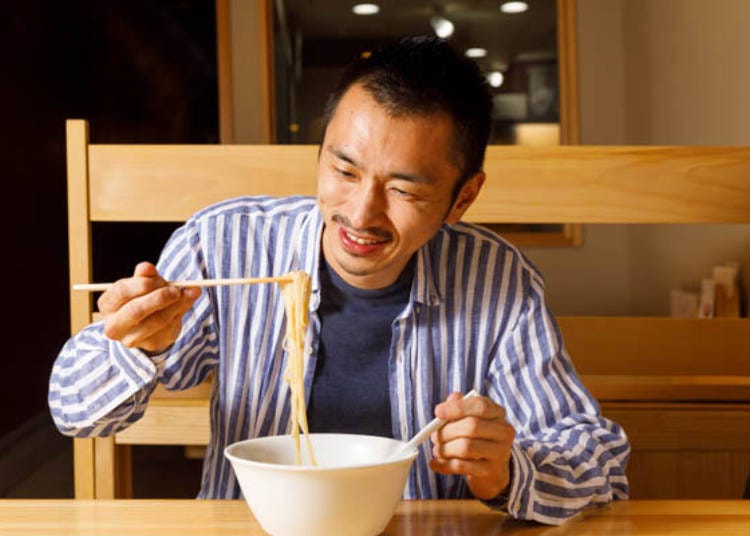

Enjoy Tsukemen Five Ways – Maybe for the First Time!
We were still enraptured by the ramen and wonton when the tsukemen arrived. The noodles, served in a yellow soup, have a different color and thickness than the ramen.

First, add salt to the noodles and eat them according to the “How to Eat Delicious Tsukemen” instructions placed on the table.
Upon the first bite I thought “Hmm!?! Even though it hasn’t been dipped in the sauce, it tastes like tororo kombu!” Double-checking the menu confirmed that it was “Tsukemen (Thick Kelp Bonito Dashi),” meaning the cold yellow broth was made of kelp and bonito.
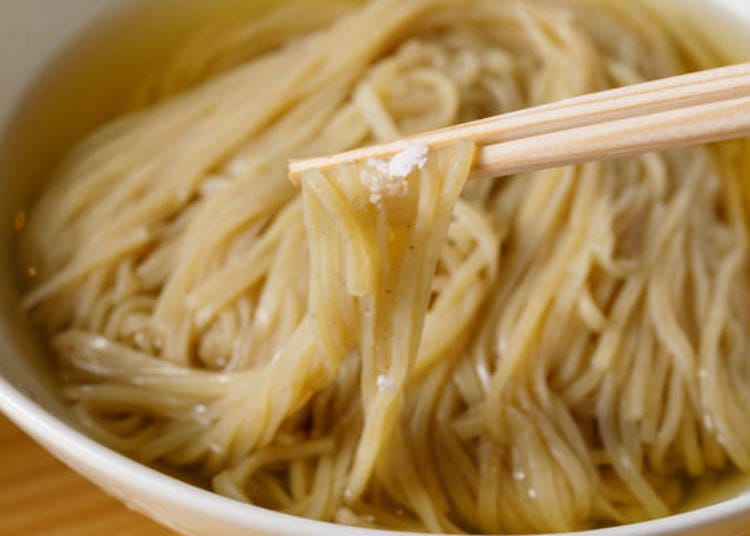
The aroma of the wheat noodles themselves is amazing too. To get a true sense of their flavor, it’s best to have them only with salt to begin with.
Next, quickly dip the noodles in the sauce. It’s clear from the color, body, and aroma that it has a higher soy content than that of the ramen’s soup. But combined with the noodle broth, the is taste is just right.
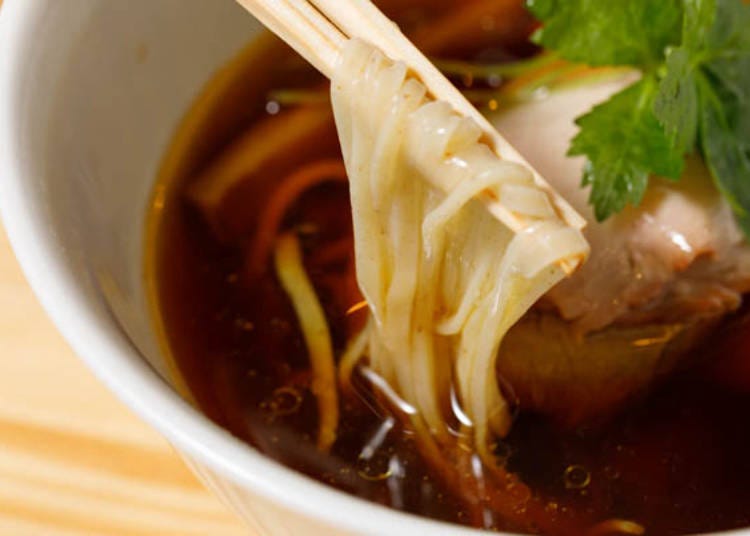
According to the eating instructions, the kelp bonito broth coats the noodles and prevents the soy dipping sauce from soaking into the noodles, allowing the individual flavors of the noodles, broth, and sauce to remain intact.
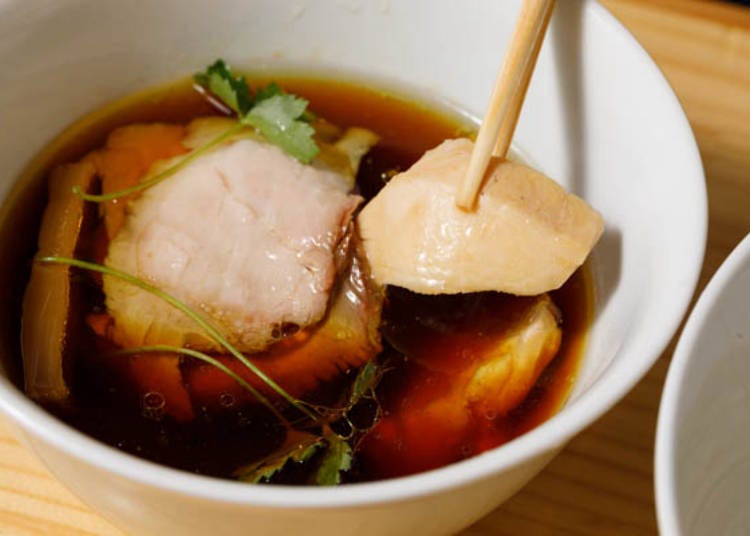
After eating a few bites this way, it’s time to add the tangy citrus juice to the sauce for a change of taste and smell!
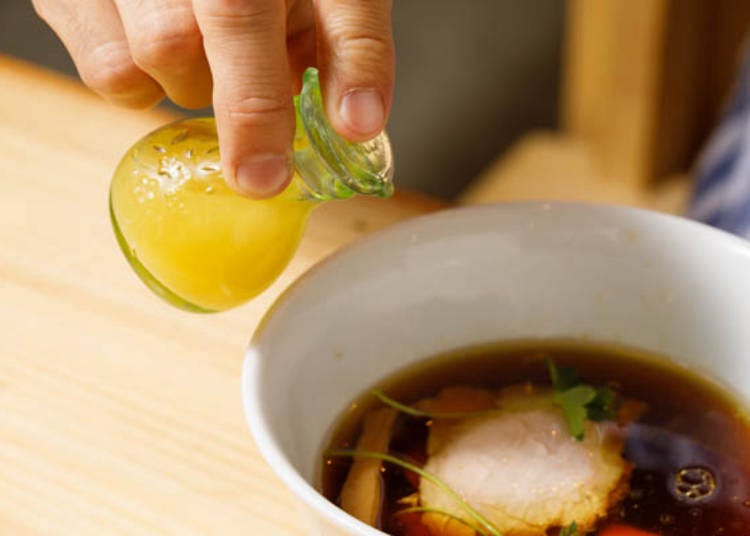
Often, as you continue eating, tsukemen dipping sauce may become thin or you might tire of the flavor, but that’s not the case with Iida Shouten’s tsukemen. Not only the citrus juice, but also the seaweed and wasabi will change the noodles’ flavor so your chopsticks won’t stop!
After finishing the noodles, there is one more culinary delight at the end – combining the soup and sauce and drinking it.
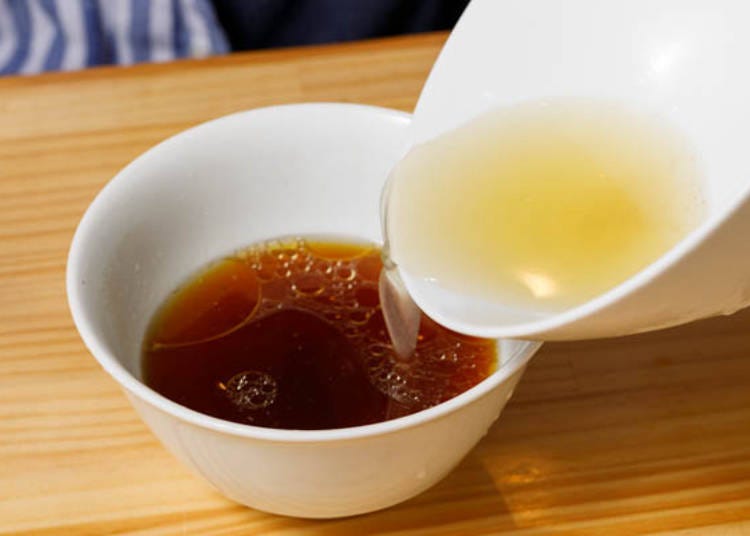
Drink the last drop and you’re done. You can simply enjoy the noodles soaked in the kelp bonito broth, or sample different flavors one after another as you dip the them in the sauce and add other ingredients. This was first time we’ve had such delicious tsukemen!

We were surprised to discover that many customers have two bowls of noodles, and two diners even had three. We were told later that the record is seven bowls!
Even if you didn’t buy multiple meal tickets, you can still place additional orders to satisfy your appetite. And since customers line up outside, once you enter the small shop you’ll be able to enjoy a peaceful meal.
Noodles and Soup Inspired by Masters
After a satisfying meal, we interviewed the owner, Shota Iida. Mr. Iida is from Manazuru, Kanagawa, and began working as a chef after graduating from college. However, at the age of 25 circumstances led him to return to his parents’ home and the family business. Next he became a franchise owner in a ramen shop chain operated by his uncle.
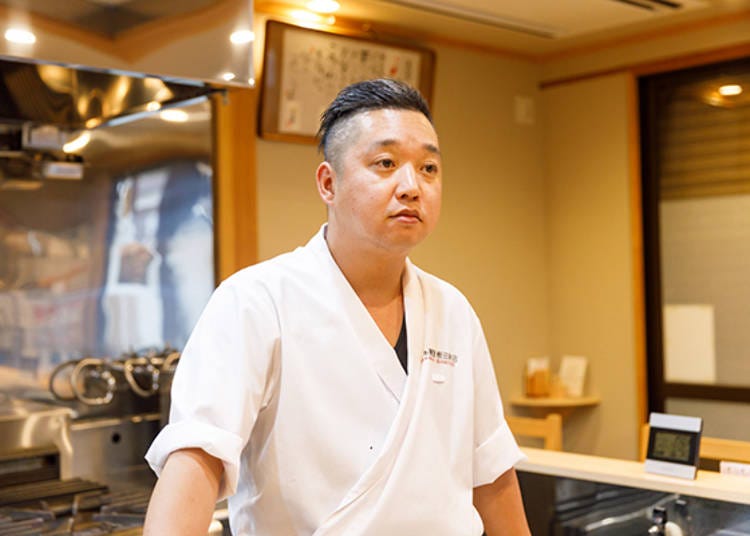
“I was a little confused when I decided to open a ramen shop, because I had a degree and could do whatever I wanted, but thought it would be rewarding. I had to work hard and sleep little. Even just remembering it now, I get sleepy.”
Looking back on those days Iida says he learned “to value the customer” through his work.
“Because it was a chain shop, the taste and recipe were fixed. To attract customers, it was necessary to offer more, so I started befriending them. People like to be liked, and ramen made by your favorite guy is delicious (laughs).”

The phrase “customers don't come for the product” is affixed to a pillar visible from the kitchen. That’s a quote from the founder of the Ito-Yokado Group found in a book Iida read to learn about management.
After working for about eight years, Iida, who had always dreamed of a being a chef, decided to make his own ramen. While visiting other shops in search of the ideal taste, he was impressed by the ramen of the late ramen master, Minoru Sano.
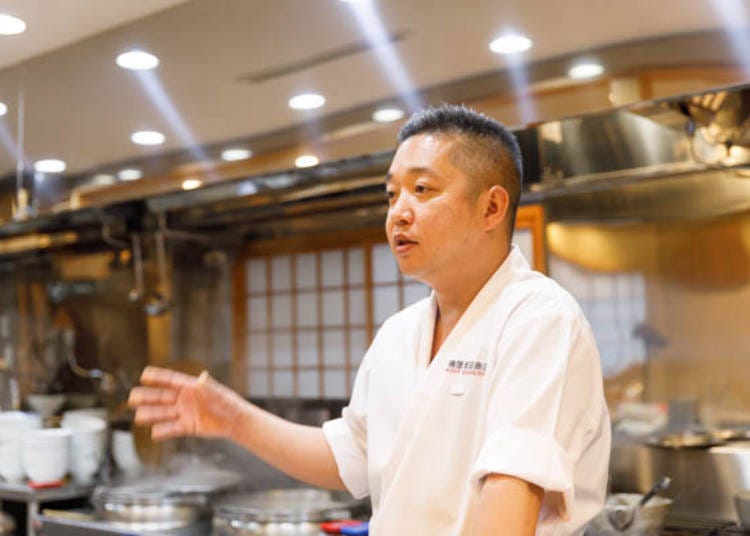
The shop is very organized, including the kitchen. Iida, who says “the setting is also one of the tastes,” says he learned the basics of working as a chef at a Japanese restaurant.
“Up to that point, I’d thought of ramen as a soup dish, and didn’t think much about the taste of the noodles. But wheat noodles take on the flavor of the broth and I was amazed by ramen with such culinary character.”
From then on, Mr. Iida went to Sano's shop and worked on noodle research. He tried using the flour that Sano used, actually went to the wheat production area, and has since modeled his own noodles on Sano’s.
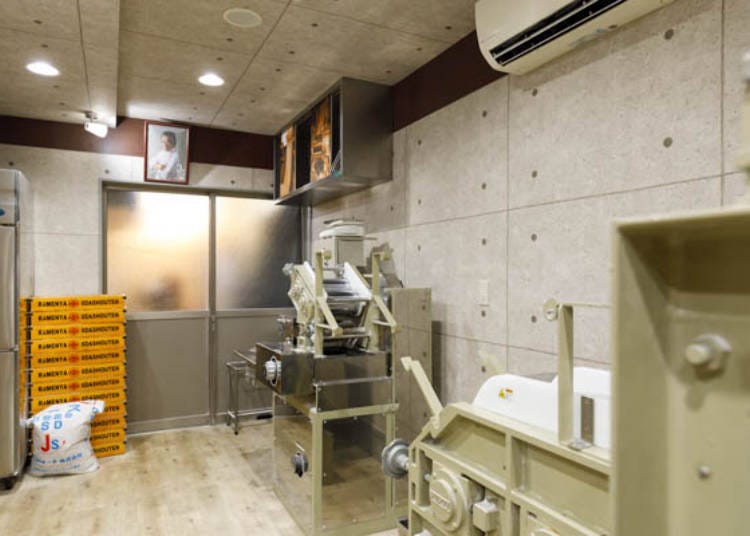
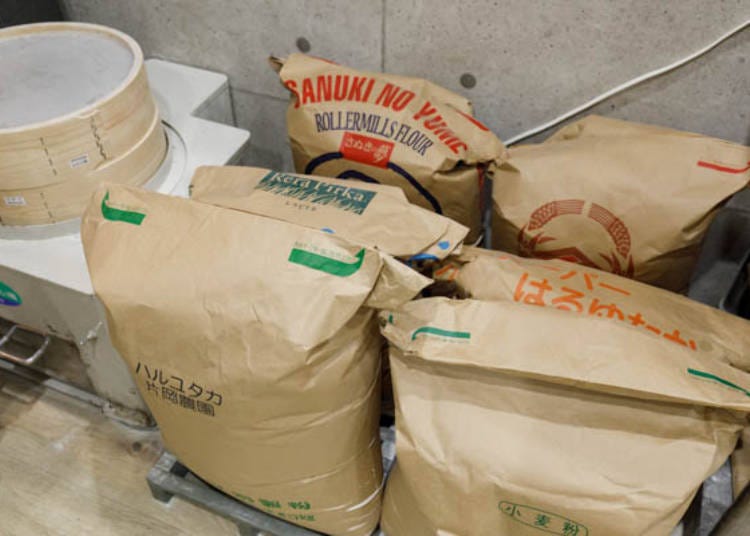
Carefully selected domestic wheat is used to make dough and then pressure is applied with a larger than usual roller to create smooth-textured noodles.
“The noodles differ by type, composition, shape of the wheat, etc. depending on the menu item. For example, tsukemen uses a combination of two types of noodles – flat and square cut noodles. Flat noodles soak up the soup, and square cut noodles add texture.”
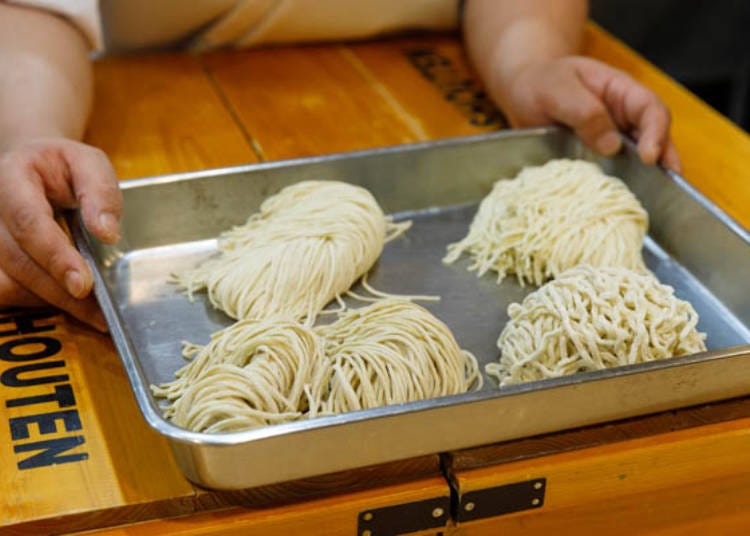
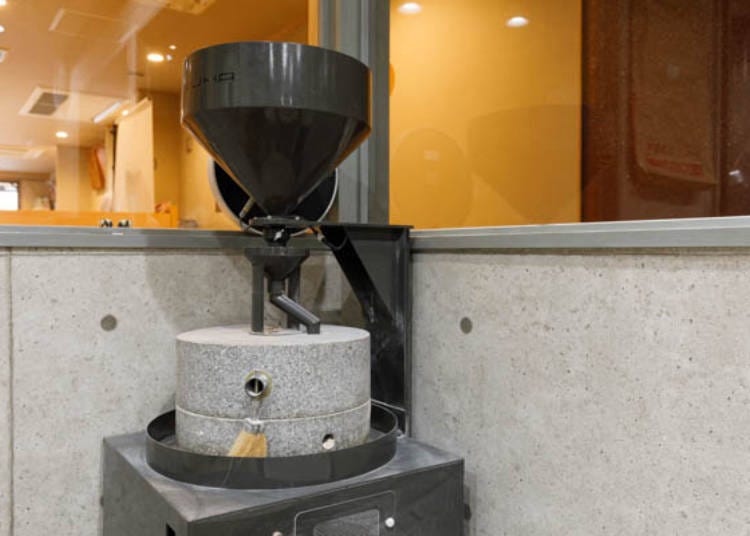
“Freshly-ground wheat has a different scent. To accentuate the wheat flavor and aroma, we use 2% of our own ground flour when making salt ramen noodles. On the other hand, in the case of soy sauce noodles, we do not use millstone flour because we want to maintain the sharpness and aroma of the soy sauce.”
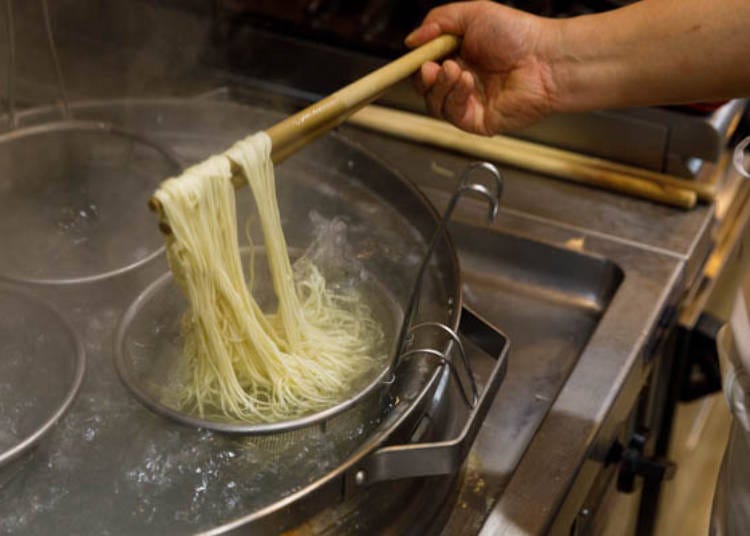
In addition to Mr. Sano, Iida has been strongly influenced by another craftsman: Junichi Shimazaki, owner of “69'N'ROLL ONE” in Sagamihara, Kanagawa (now relocated to Amagasaki, Hyogo and known as “Rock'n Billy S1”), whose shop Iida also visited during his research stage.
“I thought the ramen at 69'N'ROLL ONE made with only chicken and water was amazing. When I went there only Mr. Shimazaki and two customers were in the shop. I ate two bowls of soy sauce ramen, we talked while I ate, and after the shop closed, I got an introduction to the soup. This was a groundbreaking change in my ramen life.”

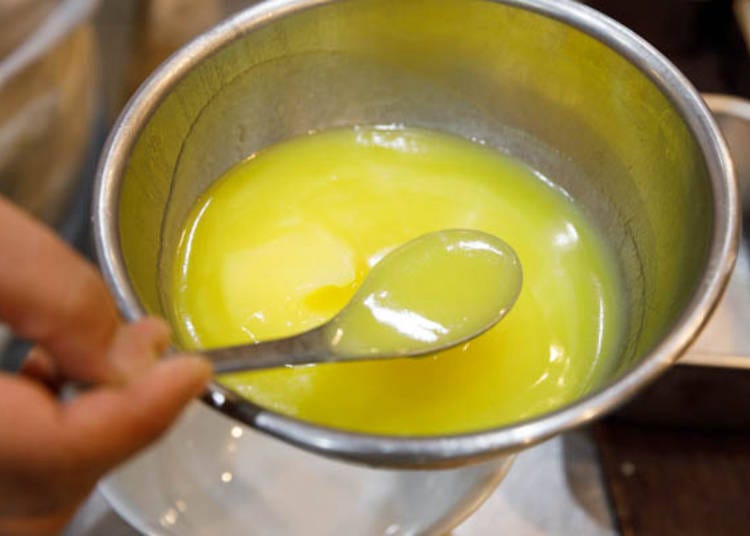
Six types of soy sauce from Hyogo, Gunma, Wakayama, and other prefectures are carefully selected and blended, including dark, light, Saishikomi (double fermented), and Tamari soy sauce.
“Each of the six types of soy sauce has a role. The Tamari is rich, the dark is sharp and full, and the light is fragrant.”
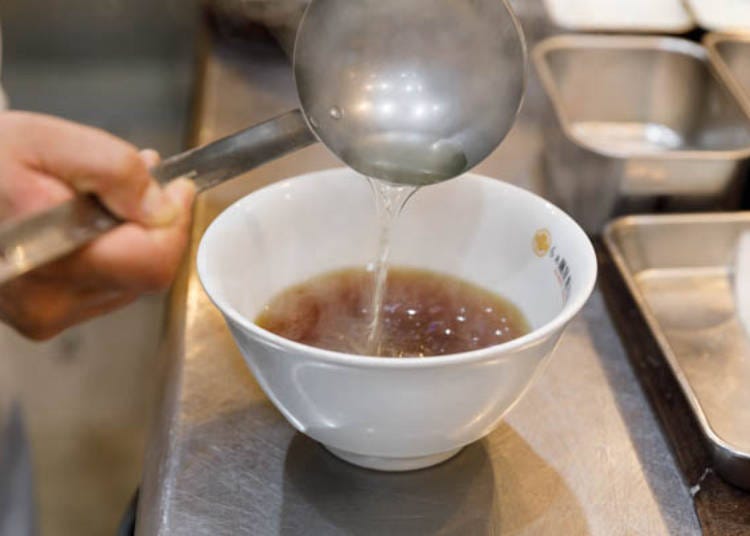
Having perfected his own noodles and soup, Iida opened Ramenya Iida Shouten in March 2010 in Yugawara, where his family's warehouse was originally located.
Listening to the story of how the restaurant was opened and the development of the ramen itself, we were able to get a glimpse of Mr. Iida's passion for ramen.

A Shop Worth the Trip to Yugawara
Mr. Iida, who has pursued his own taste, cherishes the insight received from ramen industry veterans. In relation to reaching the highest peak of the ramen world, he humbly says, “There's still a ways to go.”
“There is a saying, ‘Look for the place the old man seeks, not for the traces of the old man.’ Not only do you mimic your seniors, but it’s also important to understand why they did it that way. If you know why, you’ll value the ingredients and I think you can leave ramen in a good place.”
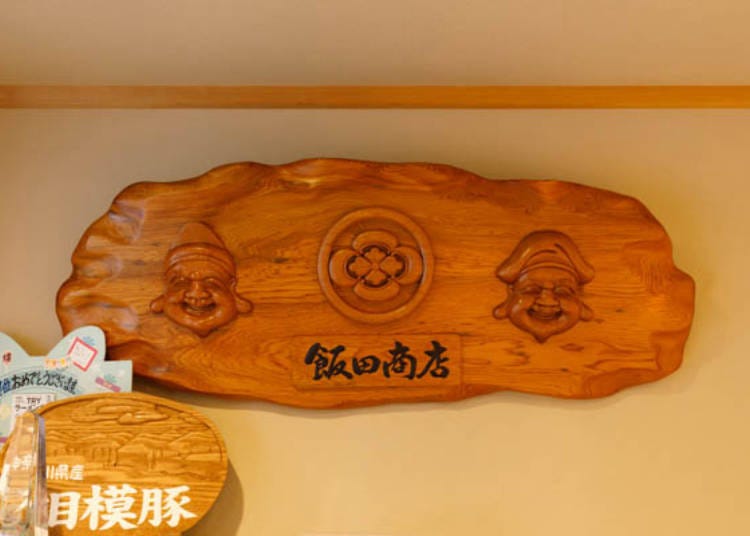
The name “Iida Shouten” is also the name of the former family business. “The industry is different, but I think my father, who has passed away, would be pleased with the succession of Iida Shouten,” says Mr. Iida.
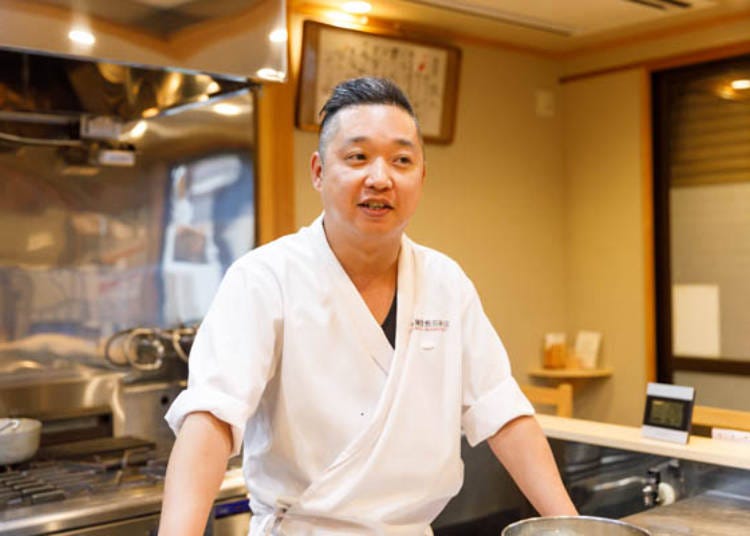
In addition to the ingredients and cooking methods, Mr. Iida's sincere attitude and approach to his work make it clear why customers from all over Japan come to visit his shop. Whether you like ramen, or don’t eat it often, be sure to visit Iida Shouten. In either case, your impression of ramen will be changed!
-
Ramenya Iida Shoutenらぁ麺屋 飯田商店
- Address 2-12-14 Doi, Yugawara, Ashigarashimo-gun, Kanagawa 259-0303
- Phone Number 0465-62-4147
Hours: 11:00 - 15:00 (closes as soon as ingredients are exhausted); closed Mondays (but open on public holidays, closed on the following Tuesday)
- Area
- Category
*Prices and options mentioned are subject to change.
*Unless stated otherwise, all prices include tax.
Limited time offer: 10% discount coupons available now!
-

12 Unique & Fun Tokyo Food Tours to Enjoy in 2024
-

Where to Eat in Yokohama: 10 Must-Try Restaurants for Yakiniku, Izakayas, Unique Dining & More
-

Step Into the Story: Inside Immersive Fort Tokyo
-

15 Must-Try Restaurants in Ikebukuro: From Aged Yakiniku to All-You-Can-Eat Sushi, Plus Adorable Animal Cafés
-

15 Must-Try Sushi Restaurants in Tokyo (+5 Trending Areas to Explore for Foodies)
-

Everything You Need To Know About the Kyoto-Osaka Sightseeing Pass
-
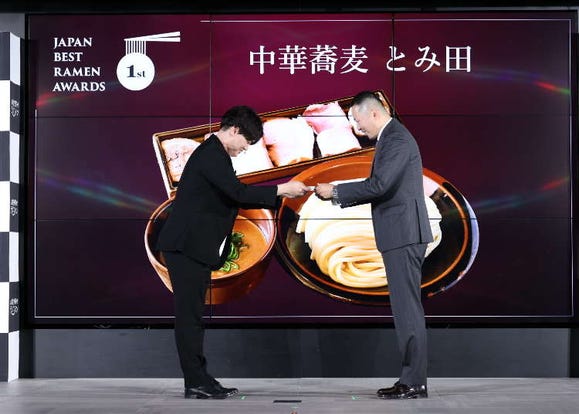
Noodle Revolution: Japan's Experts Reveal '2023 Best Ramen & Latest Trends'
-
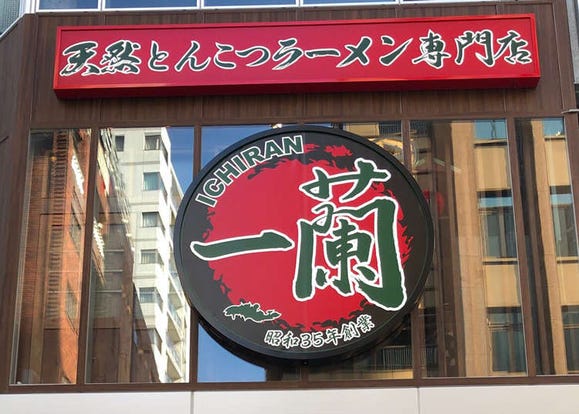
We Tasted Ichiran Ramen’s Wild $10 ‘Octagonal Bowl Set’ in Asakusa – Here’s What We Thought!
-
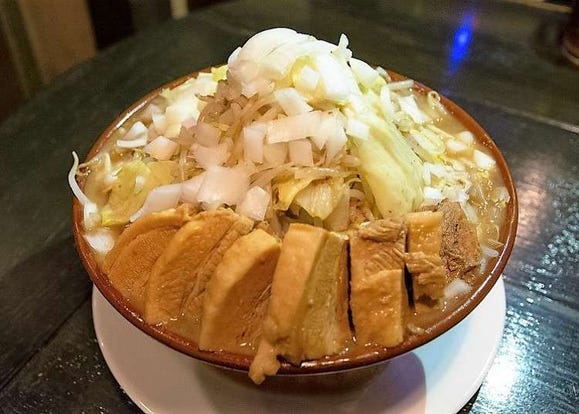
Where to Eat in Akihabara: 3 Awesome Restaurants Recommended by Locals!
-

Exploring Tokyo: 3 Must-Visit Spots around Tokyo Station
-
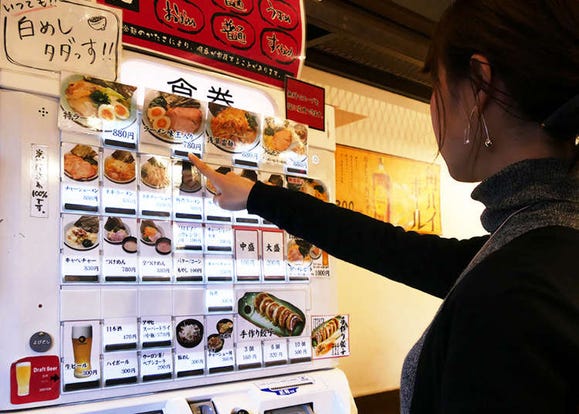
4 Easy Steps: How Do You Order Ramen Using a Ticket Vending Machine in Japan?!
-

16 Secrets About Mt. Fuji, the Symbol of Japan: Even Japanese People Don’t Know That?!
- #best ramen tokyo
- #what to buy in ameyoko
- #what to bring to japan
- #new years in tokyo
- #best izakaya shinjuku
- #things to do tokyo
- #japanese nail trends
- #what to do in odaiba
- #onsen tattoo friendly tokyo
- #daiso
- #best sushi ginza
- #japanese convenience store snacks
- #best yakiniku shibuya
- #japanese fashion culture
- #best japanese soft drinks













